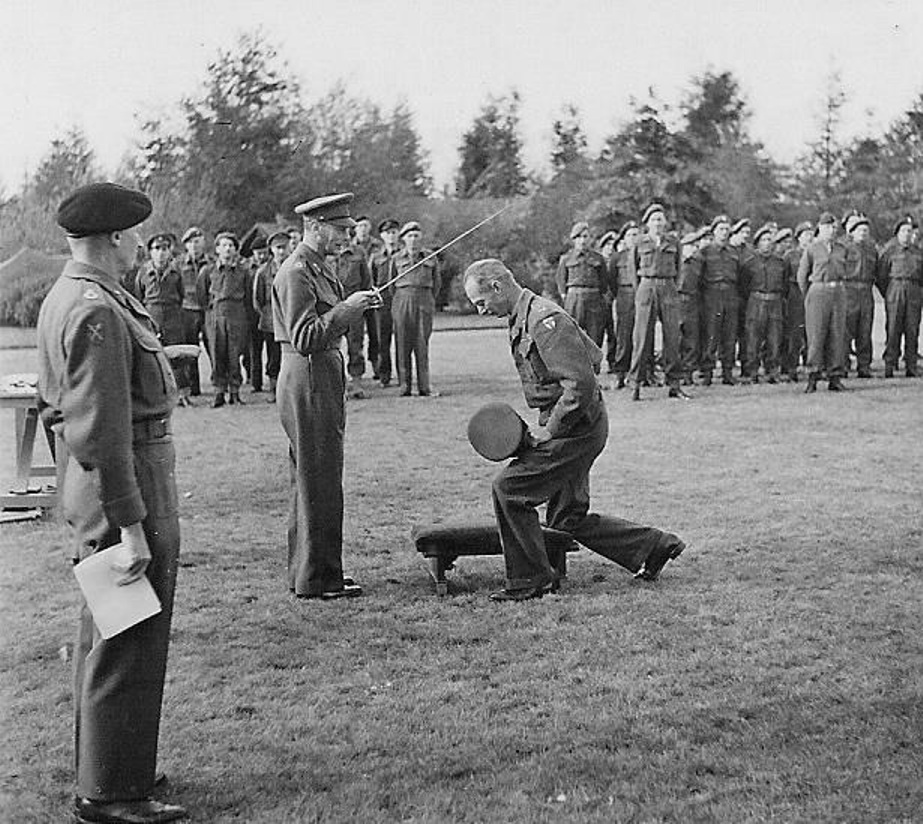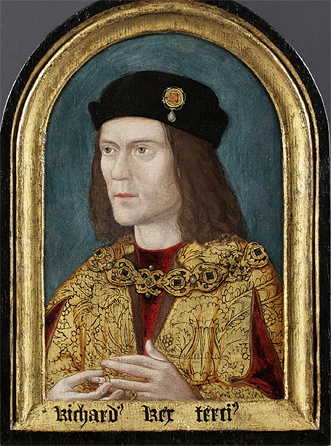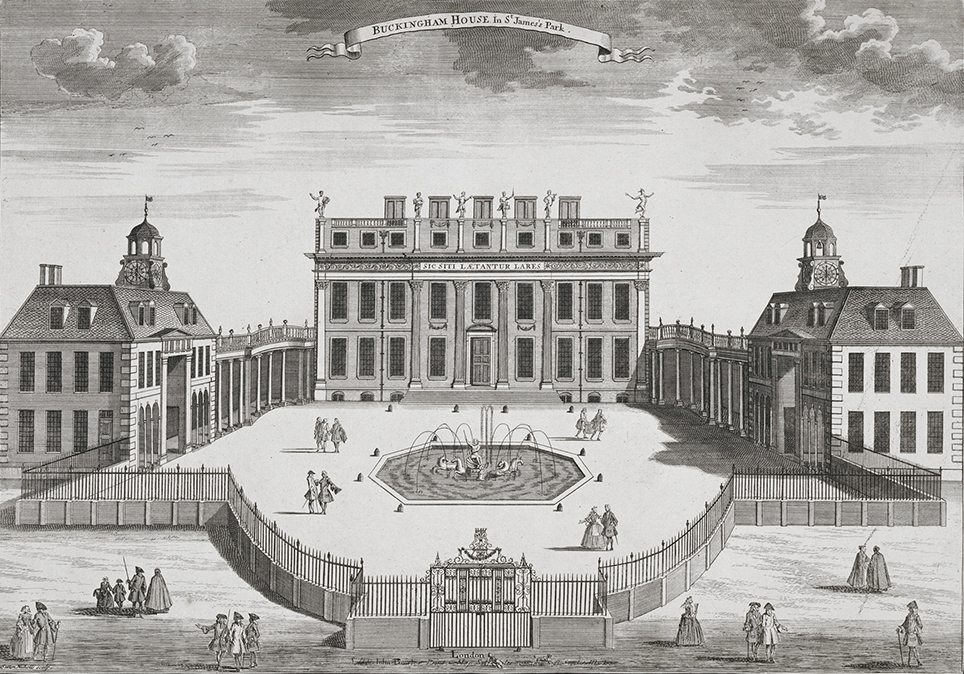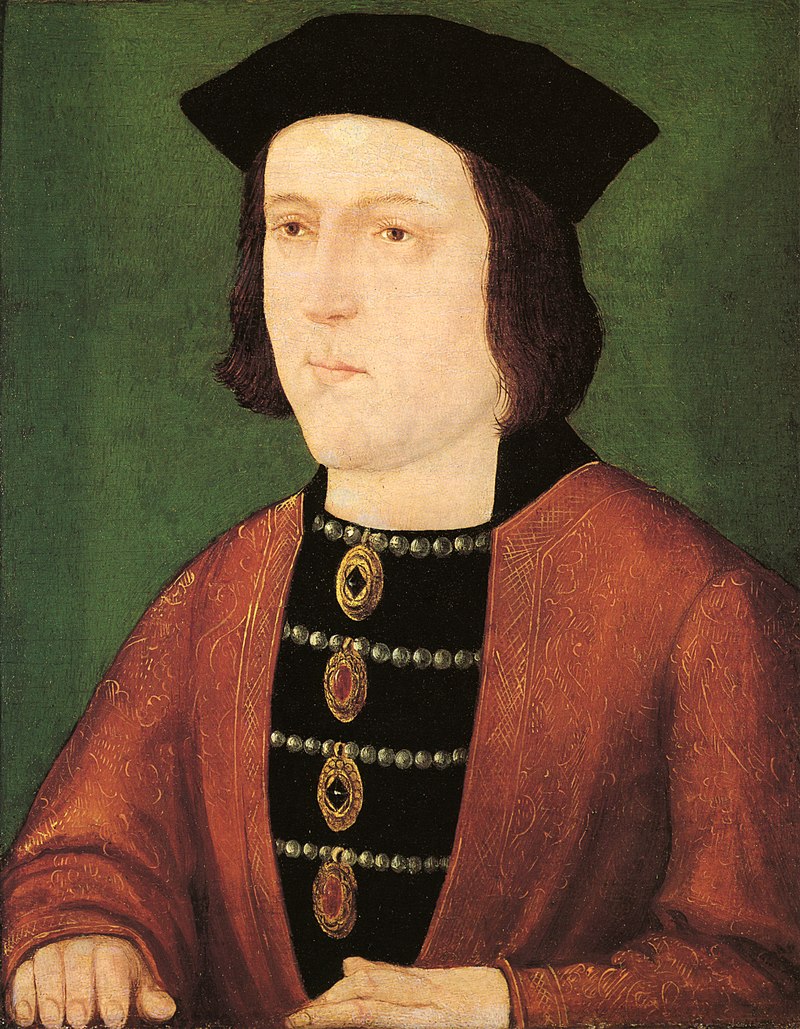by Susan Flantzer
© Unofficial Royalty 2024

Soldiers of the Household Division on parade; Credit – By Photo: Sergeant Steven Hughes, RLC/MOD, OGL v1.0, https://commons.wikimedia.org/w/index.php?curid=26910653
Guarding the British Monarch is the responsibility of seven army regiments called The Household Division. The Household Division is responsible for Mounting The King’s Guard (or The Queen’s Guard if the Monarch is female) – guarding the Monarch – at Buckingham Palace, St. James’s Palace, Windsor Castle, the Tower of London, Horse Guards, Clarence House, the London home of King Charles III and Queen Camilla, adjacent to St. James’s Palace, and sometimes Holyrood Palace, the Monarch’s official residence when in Edinburgh, Scotland.
The regiments of the Household Division also participate in State Ceremonial events including The King’s Birthday Parade (Trooping the Colour), the State Opening of Parliament, State Visits, the National Service of Remembrance at the Cenotaph, and other events of national importance such as royal weddings and royal funerals. When some members of The Household Division are on their ceremonial duty rotation, the other members serve as active-duty soldiers. The Monarch is Colonel-in-Chief of all seven regiments in the Household Division.
Two regiments, known as the Household Cavalry, are on horses. The remaining five regiments, who wear the scarlet tunics and the bearskins, are the Foot Guards, infantry soldiers. The five Regiments of Foot Guards in the Household Division perform the mounting of the guard at Buckingham Palace, St. James’s Palace, Windsor Castle, the Tower of London, and Clarence House. The two regiments of the Household Cavalry mount the guard while mounted on horses outside of Horse Guards.
Regiments of the Household Cavalry
The Life Guards

A mounted Life Guard at Horse Guards; Credit – Wikipedia
The Life Guards is the most senior regiment of the British Army. They wear a scarlet tunic, a metal cuirass (a piece of armor covering the torso), and a matching helmet with a white plume on the top in an onion shape. The Life Guards wear their chin strap below their lower lip.
The Blues and Royals

A member of The Blues and Royals in uniform; Credit- Wikipedia
The Blues and Royals is the second-most senior regiment in the British Army. They wear a blue tunic, a metal cuirass, and a helmet with red plumes. The Blues and Royals wear their chin strap under their chin.
Regiments of the Foot Guards
(And how to tell them apart. It’s the buttons.)
Grenadier Guards

A member of the Grenadier Guards in uniform; Credit – Wikipedia
The Grenadier Guards have single buttons on their tunics and their collar badge is a grenade. The most senior infantry regiment of the British Army, the Grenadier Guards is the premier ceremonial regiment. It traditionally provides the pallbearers for deceased monarchs, most recently for Queen Elizabeth II. At the Coronation of King Charles III and Queen Camilla, a color party from the Grenadier Guards was present in Westminster Abbey.
Coldstream Guards

A member of the Coldstream Guards in uniform; Credit – Wikipedia
The Coldstream Guards have buttons in groups of two on their tunics and their collar badge is the Garter Star and is the oldest continuously serving regular regiment in the British Army. In addition to other public and ceremonial duties, the band of the Coldstream Guards plays at the Changing of The Guard, state visits, and many other events.
Scots Guards

A member of the Scots Guard in uniform; Credit – Wikipedia
The Scots Guards have buttons in groups of three on their tunics and their collar badge is a thistle. They were the personal bodyguard of King Charles I of England and Scotland.
Irish Guards

A member of the Irish Guard in uniform; Credit – Wikipedia
The Irish Guards have buttons in groups of four on their tunics and their collar badge is a shamrock. They were formed in 1900 by order of Queen Victoria to commemorate the Irishmen who fought in the Second Boer War for the British Empire.
Welsh Guards

A member of the Welsh guard in uniform; Credit – Wikipedia
The Welsh Guards have buttons in groups of five on their tunics and their collar badge is a leek. They were formed in 1915, during the First World War, by the Royal Warrant of King George V.
The Sentry

For some reason, the gates of Buckingham Palace were open and this writer was able to take photos. Besides the sentries at their posts in the background, there were some heavily armed police officers. It appears that the sentry on the left is being changed. Credit – © Susan Flantzer, October 2018.
A sentry will be on duty at their post for two hours. There is a sentry box for the sentry to use in inclement weather. Every ten minutes, he/she comes to attention, slopes the rifle, and does a march of fifteen paces across the area of the post. The sentry does this four to five times. He/she then shoulders the rifle and stands at ease.

The sentry at Windsor Castle, directly across from the steps of St. George’s Chapel, July 17, 2015. Notice how close the people are to the sentry; Credit – © Susan Flantzer
Sentries receive instructions on how to deal with nuisances or possibilities of threats from the public. The protocol begins with the sentry stamping and coming sharply to attention. He/she shouts: “Stand back from the King’s Guard!” If a person steps in front of a sentry while he/she is marching, the sentry will shout: “Make way for the King’s Guard.” If the initial protocols do not eliminate the nuisance or threat, the sentry repeats the protocol. If the nuisance or threat continues, the sentry will assume the position of port arms (holding the rifle diagonally in front of the body with the muzzle pointing upward to the left) and then point his/her rifle at the person, and shout, “Stand back from the King’s Guard!” If the warnings are not heeded the sentry then has the choice of detaining the person(s) himself or pressing the button in his sentry box to summon assistance.
At Buckingham Palace, the sentry on duty stands behind the gates so there is no direct contact with the public. However, at other sites, the public can get quite close to the sentry and sometimes become a nuisance. While at Windsor Castle on July 17, 2015, this writer witnessed such a nuisance from a young man (from a country whose young people were observed by my husband and me to be rude and disrespectful during our visit to England). As the sentry walked back and forth, this young man walked next to the sentry. This writer witnessed all the protocols in the above paragraph except for detaining the person or summoning assistance, so, yes, I did see the sentry in the photo above point his gun at the young man and shout, “Stand back from the Queen’s Guard!” This short video taken at Windsor Castle shows a similar situation: YouTube: Why you don’t harass the Queen’s Guard. Soon after this incident, ropes were installed between the sentry posts at Windsor Castle and the public to keep the public away from the sentry.
Changing The Guard
At Buckingham Palace, St. James’s Palace, and Clarence House
The King’s Guard at Buckingham Palace, St. James’s Palace, and Clarence House is provided by one of the five regiments of the Foot Guards – Grenadier Guards, Coldstream Guards, Scots Guards, Irish Guards, and Welsh Guards. The Changing of the Guard occurs behind the palace gates in the Buckingham Palace forecourt at 11:00 AM usually every day during the summer and on Monday, Wednesday, Friday, and Sunday during the rest of the year. The public can observe the ceremony by standing outside Buckingham Palace gates.
The New Guard forming up on the parade square at Wellington Barracks before taking part in Changing the Guard in Buckingham Palace
The St. James’s Palace detachment of the King’s Guard, including the guard at Clarence House, the London residence of King Charles III and Queen Camilla, adjacent to St. James’s Palace, is also changed during this ceremony. They march the short distance along The Mall to Buckingham Palace, where the Buckingham Palace detachment has formed up to await their arrival. These two detachments are the Old Guard. At the same time, the New Guard is forming on the parade square at Wellington Barracks located about 300 yards/270 meters from Buckingham Palace. When the New Guard is formed, it marches across into the forecourt of Buckingham Palace, advances toward the Old Guard in slow time, and halts. The Old Guard presents arms and then the New Guard presents arms. The captains of the guards march towards each other for the handing over of the palace keys. The new relief guards are marched to the guardrooms of Buckingham Palace and St. James’s Palace to await their sentry duty rotation.
The band by the center gate, in a half-circle, and playing music
Meanwhile, the band has taken its place by the center gate, in a half-circle, and plays music. The two regimental colors are paraded up and down by the junior officers. With the Old Guards and New Guards formed once again, the Old Guard marches out through the center gates in slow time to a regimental slow march played by the band. At the end of the slow march, the captain of the Old Guard gives the word of command to “Break into quick time” and with a brisk five-pace roll from the drums, the band leads the way back to Wellington Barracks.
The Old Guard leaving Buckingham Palace and returning to Wellington Barracks
At Windsor Castle

The New Guard marching from Victoria Barracks to Windsor Castle; Credit – © Susan Flantzer
A similar Changing of the Guard ceremony occurs at Windsor Castle. However, the ceremony takes place inside the Windsor Castle precincts, so a castle ticket is needed to watch the ceremony. The King’s Guard at Windsor Castle is provided by one of the five regiments of the Foot Guards – Grenadier Guards, Coldstream Guards, Scots Guards, Irish Guards, and Welsh Guards. The guards march from Victoria Barracks on Sheet Street, up the High Street, and into Windsor Castle, and the public gathers along the streets to see them marching to Windsor Castle.

A sentry on duty at Windsor Castle; Credit – © Susan Flantzer
At The Tower of London
The King’s Guard at the Tower of London
The King’s Guard, at the Tower of London is provided by one of the five regiments of the Foot Guards – Grenadier Guards, Coldstream Guards, Scots Guards, Irish Guards, and Welsh Guards, consists of one officer, six non-commissioned officers, and fifteen soldiers. A sentry is posted outside the Jewel House, where the Crown Jewels are kept, and outside The Queen’s House. Protecting the Tower of London is a joint effort of the King’s Guard, the Yeomen Warders, and the Jewel House Wardens.
The Ceremonial Opening at the Tower of London
Three main military ceremonies take place at The Tower of London. At 9:00 AM, during The Ceremonial Opening, a military escort and the Duty Yeoman Warder open the Middle and Byward Towers after which the public is allowed to enter. At 3:00 PM, The Officer of The Guard and an Escort, march to the Byward Tower to collect the Word. The Word is the daily changing password for after-hours entry to the Tower of London, used by Tower staff, residents, and the soldiers on duty.

The Ceremony of the Keys during the reign of Queen Victoria; Credit – Wikipedia
Filming is not allowed during the Ceremony of the Keys. C-SPAN was permitted to film the Ceremony of the Keys during the 1991 Economic Summit of the United Nations and the summit participants attended.
The third ceremony starts at exactly 9:52 PM every night, when the Chief Yeoman Warder with a military escort, secures the Tower in the centuries-old custom of the Ceremony of The Keys, during which the main gates are locked. Between 40 and 50 visitors can see the ceremony each night but tickets must be purchased in advance. The Chief Yeoman Warder, carrying a lantern, leaves the Byward Tower and falls in with the military escort.
The Warder gives his lantern to a soldier and marches with the escort to the outer gate. The sentries on duty salute the King’s Keys as they pass. The Warder first locks the outer gate and then the gates of the Middle and Byward Towers. (above photo)
The Warder and escort march to the Bloody Tower archway where a sentry challenges the party to identify themselves (above photo):
Sentry: “Halt! Who comes there?”
Chief Warder: “The keys.”
Sentry: “Whose keys?”
Chief Warder: “King Charles’s keys.”
Sentry: “Pass King Charles’s Keys. All’s well.”
The Warder and the military escort march down to the Broadwalk Steps where the main Tower Guard is in formation to meet them (above photo). The Warder’s party halts, and the officer in charge gives the command to present arms. The Chief Warder steps forward, doffs his bonnet, and proclaims: “God preserve King Charles!” and the Guard responds “Amen!”
On the answering “Amen!”, the clock of the Waterloo Barracks in the Tower of London strikes 10:00 PM, and the Last Post is sounded, marking the end of the Ceremony of the Keys. The escort is dismissed, and the Chief Warder takes the keys to the King’s House for safekeeping overnight
At Horse Guards

View of Horse Guards from Whitehall; Credit – Wikipedia
The King’s Life Guard is provided by the Household Cavalry Mounted Regiment, which consists of the Life Guards who wear red tunics and white helmet plumes, and the Blues and Royals who wear blue tunics and red helmet plumes. They serve as sentries, mounted on horses at the entrance to Horse Guards on Whitehall in London. Horse Guards, a building in between Whitehall and Horse Guards Parade, is still used for military purposes. Behind the Horse Guards building is the Horse Guards Parade. It was originally the courtyard in the middle of Whitehall Palace, built during the reign of King Henry VIII. Whitehall Palace was the main residence of the English monarchs from 1530 until 1698, when most of its structures, with the notable exception of the Banqueting House, were destroyed by fire. It is now the ceremonial parade ground used for royal and ceremonial events throughout the year.
Two mounted sentries guard the entrance to Horse Guards from 11:00 AM until 4:00 PM and are changed every hour. From 4:00 PM until 8:00 PM, a pair of dismounted sentries guard the entrance. At 8:00 PM, the gates of Horse Guards are locked, and a single sentry remains until 7:00 AM.

Horse Guards Parade; Credit – Wikipedia
The main ceremony occurs every morning. Every morning at 10:30 AM, the new mounted guard leaves the Hyde Park Barracks, and arrives at the Horse Guards Parade, behind the Horse Guards building, at 11:00 AM for the Changing of the Guard. When the Monarch is in residence in London, the guard consists of one officer and twelve other ranks including a trumpeter and standard bearer, known as a Long Guard. The Standard and trumpeters only parade with a Long Guard. When the monarch is not in London, the guard is reduced to two non-commissioned officers and ten troopers, known as a Short Guard.

The daily ceremony of Changing The King’s Life Guard on Horse Guards Parade; Credit – Wikipedia
The Old Guard forms up on the north side of Horse Guards Parade and the New Guard forms up on the south side. When both Guards have formed up, the Corporal Major, the senior non-commissioned officer, and the sentries of the first relief of the New Guard leave for the Guard Room which is then handed over. The sentries of the Old Guard, after being relieved, rejoin the remainder of the Old Guard on the North side of the enclosure. They then return to their barracks.
This article is the intellectual property of Unofficial Royalty and is NOT TO BE COPIED, EDITED, OR POSTED IN ANY FORM ON ANOTHER WEBSITE under any circumstances. It is permissible to use a link that directs to Unofficial Royalty.
Works Cited
- Changing the Guard. The Royal Family. (n.d.). https://www.royal.uk/changing-the-guard
- Hardman, Robert. (2007). A Year With The Queen. Simon and Schuster.
- The Changing of the Guard at Buckingham Palace. Buckingham Palace. (n.d.). https://www.buckinghampalace.co.uk/changing-the-guard.php
- The Household Division – Official Site. (n.d.). https://www.householddivision.org.uk/
- Wikimedia. (2024, February 19). Ceremony of the Keys (London). Wikipedia. https://en.wikipedia.org/wiki/Ceremony_of_the_Keys_(London)
- Wikimedia. (2024, April 15). Guard Mounting. Wikipedia. https://en.wikipedia.org/wiki/Guard_mounting#Unit Household Division ed_Kingdom
- Wikimedia. (2024, April 19). King’s Guard. Wikipedia. https://en.wikipedia.org/wiki/King%27s_Guard











































